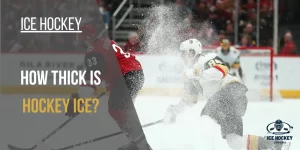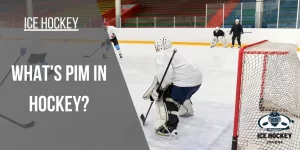Roughing in Hockey: The Unnecessary Roughness Penalty!
Hockey, a dynamic sport that captures the essence of adrenaline and teamwork, has a special phase that sets the stage for intense battles on the ice: roughing. It’s the gritty, no-holds-barred showdown where players engage in physical combat, pushing their limits to protect their teammates and claim victory. But what exactly is roughing in hockey?
This comprehensive guide unravels the mysteries surrounding this exciting game aspect, exploring the rules, strategies, and art of toeing the line between aggression and discipline. So grab your sticks and lace up your skates as we delve into the thrilling world of roughing in hockey!
Table of Contents
What is Roughing in Hockey?
Roughing is a penalty in ice hockey that occurs when a player uses unnecessary force or aggression against an opponent. It involves hitting, punching, shoving, or engaging in physical altercations that exceed the boundaries of fair play. Roughing penalties are imposed to maintain the integrity and safety of the game.
Video Example of Roughing
In the above video, the goalie for the Bruins grabs the puck, and the referee blows the whistle to stop the play. Ovechkin is seen rushing toward the net as the shot is taken, but as soon as the play is halted, he backs away from the goalie. After this, Chara, a player from the Bruins, approaches Ovechkin well after the play has stopped and gives him a crosscheck followed by a few punches. It is these actions that cause Chara to receive a penalty for Roughing.
The Official NHL Roughing Rule Text (Rule 51)
Roughing in hockey happens when a player punches or forcefully pushes another player, sometimes even hitting their head or face. It can also occur if a player purposely removes the opponent’s helmet during the game.
What are the Penalties for Roughing in Hockey?
Here are the different types of penalties for roughing in hockey:
- Minor Penalty: A minor penalty for roughing results in a two-minute stay in the penalty box. The penalty is over if the team scores a goal on a power play.
- Major penalty: A major penalty for roughing results in a five-minute stay in the penalty box. The penalized team must play shorthanded until five minutes have expired or a goal is scored. A game misconduct penalty can also accompany a major penalty for roughing.
- Game misconduct penalty: A game misconduct penalty for roughing results in the player being ejected. The player cannot return to the game, even if his team scores a goal on the power play. A fine can also accompany a game misconduct penalty for roughing.
The severity of the penalty for roughing will depend on the circumstances of the incident. The referee will consider the degree of violence, whether the player tried to injure the other player, and whether the player had a history of roughing penalties.
Actions That Cause Roughing Penalties
Here are some actions that can cause roughing penalties:
- Punching or shoving an opposing player.
- Grabbing or holding an opposing player in a way that is not part of the game.
- Tripping or falling on an opposing player.
- Recklessly skating into an opposing player.
- Repeatedly engaging in physical contact with an opposing player after blowing the whistle.
The Importance of Avoiding Roughing Penalties
Understanding the consequences of roughing is crucial for players, as it directly impacts individual gameplay and the team’s overall performance. Here are a few reasons why avoiding roughing penalties is essential:
- Maintaining Team Advantage: When a player is sent to the penalty box for a roughing penalty, their team is left short-handed for the penalty duration. This can significantly hinder their ability to score goals and defend against the opposing team.
- Injury Risk: Engaging in rough play increases the risk of injuries for the opponent and the player involved. Hockey is a physically demanding sport, and uncontrolled aggression can lead to severe consequences for all parties involved.
- Sportsmanship and Fair Play: Like any other sport, hockey values sportsmanship and fair play. Engaging in roughing actions undermines the spirit of the game and can tarnish a player’s reputation as a fair competitor.
- Penalty Kill Effectiveness: Teams that consistently receive roughing penalties face the challenge of perfecting their penalty kill strategies. Penalty killing requires effective teamwork, positioning, and disciplined play to prevent the opposing team from capitalizing on the power play advantage.
- Player Discipline and Reputation: Players who frequently engage in rough play may develop a reputation for being undisciplined and volatile. This reputation can negatively impact their standing within the league and their chances of being selected for essential games or tournaments.
Conclusion
In conclusion, understanding the rules and consequences of roughing in hockey is essential for players who aim to excel. By adhering to fair play, maintaining composure, and honing your skills, you can avoid unnecessary penalties and contribute to a positive and enjoyable hockey experience for yourself and your team. Remember, hockey is a sport that values skill, sportsmanship, and teamwork, and by embodying these qualities, you can truly shine on the ice.

Who is Austin Taylor?
Meet Austin Taylor, your go-to source for everything ice hockey! With a passion for the sport that’s as deep as the ice itself, Austin Taylor brings you concise, expert insights and nitty-gritty details on all things hockey. From gear reviews to strategy breakdowns, Austin Taylor is your trusted guide to navigating the exhilarating world of ice hockey. Get ready to lace up your skates and dive into the game with Austin Taylor as your ultimate companion.


